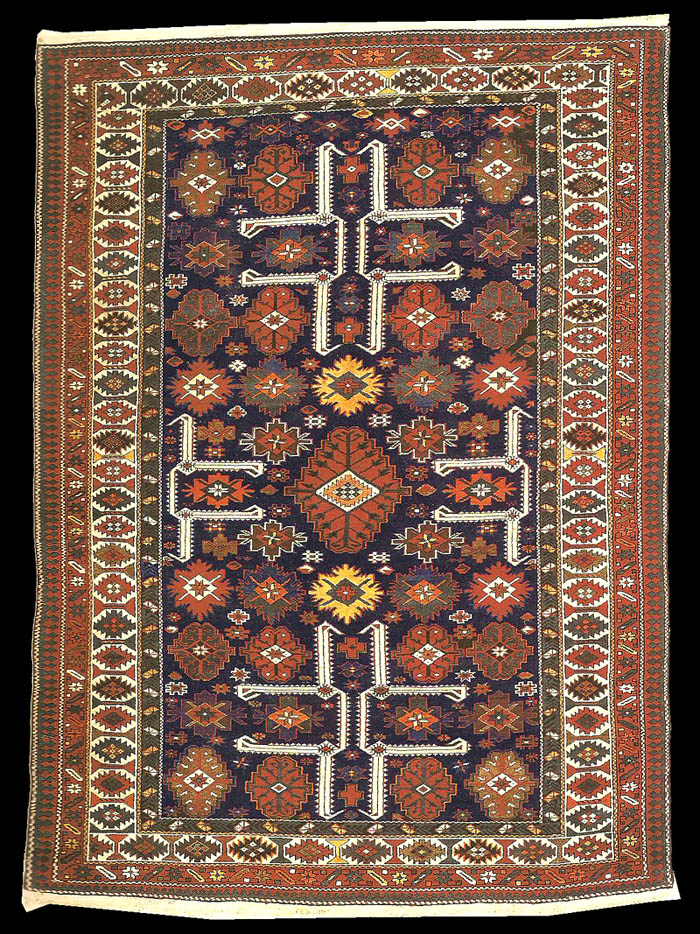|
176 x 130 cm 244
Similar to the previous piece, this one has a concentric lozenge in the
middle of the dark-blue central field. A number of different ornaments are
symmetrically grouped around it. According to L. Kerimov, the white square
islimi patterns (arabesques) which the natives call "the three-legged one"
is characteristic of this group. Authors of Western literature refer to them
as "fork meanders" or "leaf fork meanders". Doris Eder called these carpets
"leaf fork Kuba" because of a lack of information on the provenance (see
Doris Eder, Kaukasische Teppiche, Munich 1979, pp. 288-291). She quotes L.
Kerimov who regards the four whirls around a central pole or the quadruple
arrangement of the sajayaq motif as an ancient cult symbol (loc. cit., p.
289).
The main border consists of a simple sequence of octagons on a light ground
into which ashiks and/or dogajiks are woven. A carnations border as well as
star and vine meanders surround the main border. A reciprocal border of
crenels complements the carpet.
Warps: Wool,Z3S, ivory.
Wefts: Cotton, Z2, white, 2 wefts: 1st straight, 2nd waved.
Pile: Wool,Z2,Pile Height:5mm. Knots: Symmetrical 3, \, 65 °, H50xV40 =
2,000 Kn/dm2.
Handle: Velours, almost thin, ribbed. Upper End: c. 2.5 cm wide wool+cotton
simple tapestry weave; warps are cross-braided in groups in one row at the
end. Selvedge: Thin, wand and while cotton shirazi Literature: L. Kerimov
II, colour ill. 23.
published at Siyawouch
Azadi "Azerbaijani Caucasian
rugs" plate
no: 46
 |

